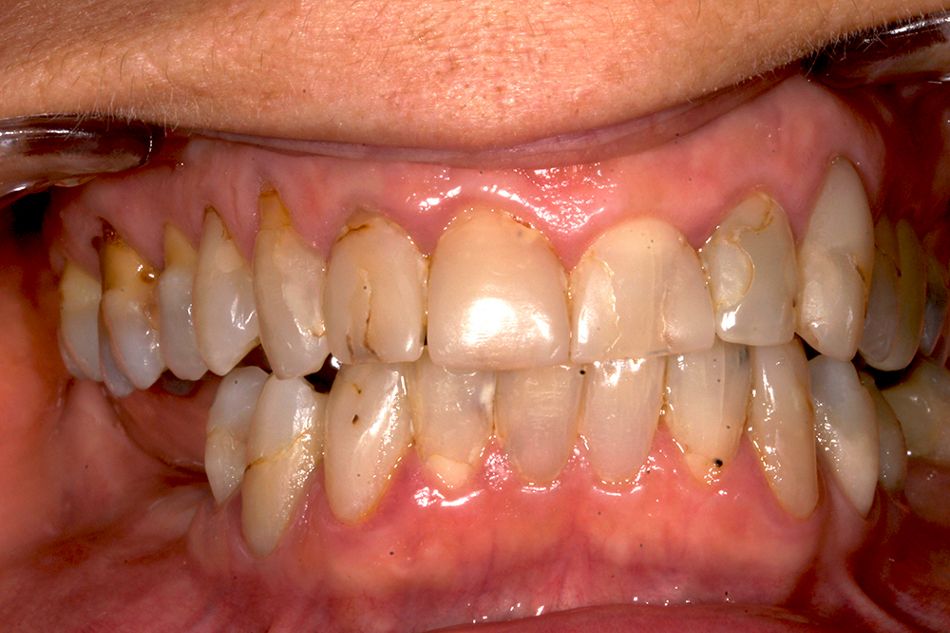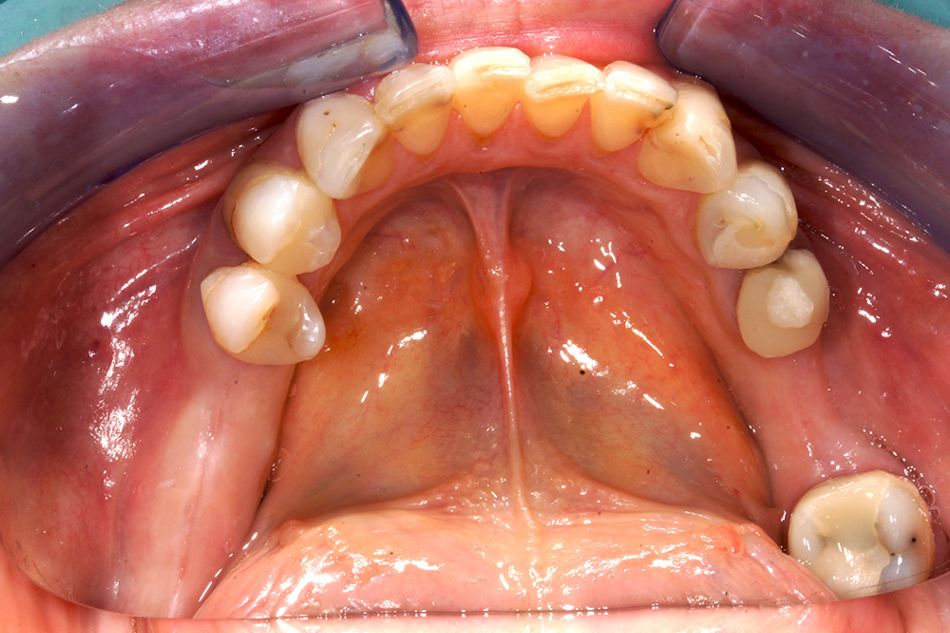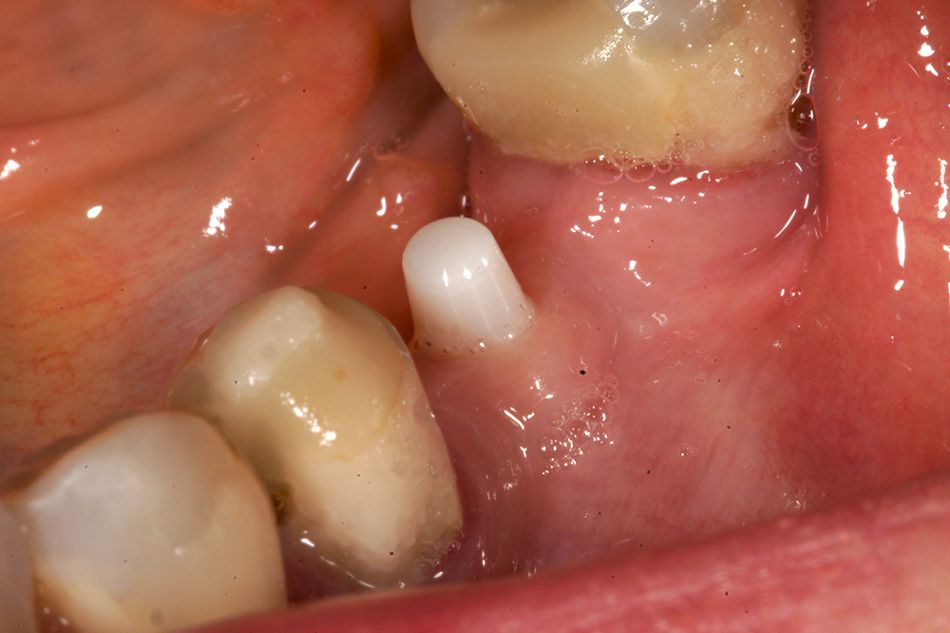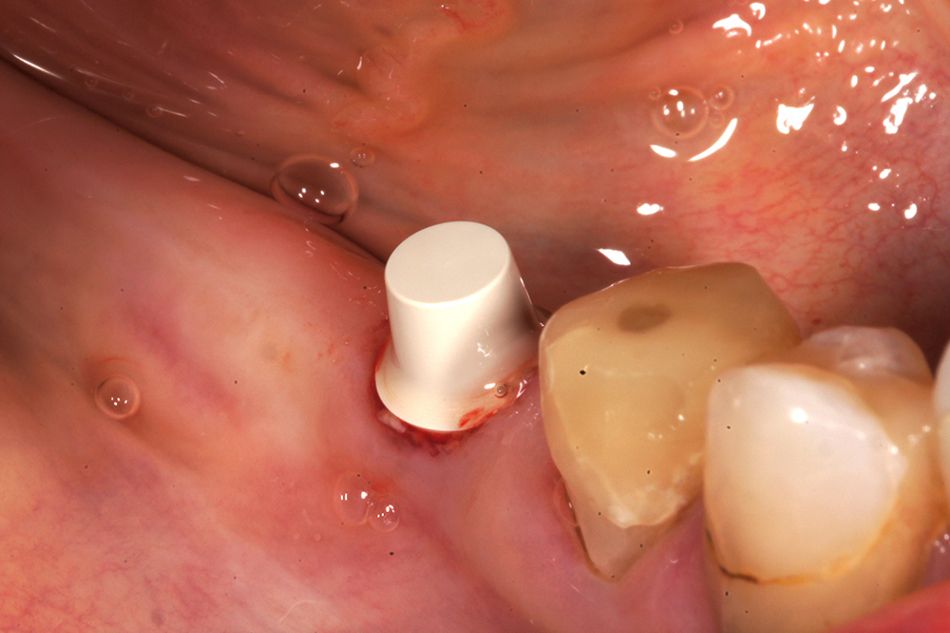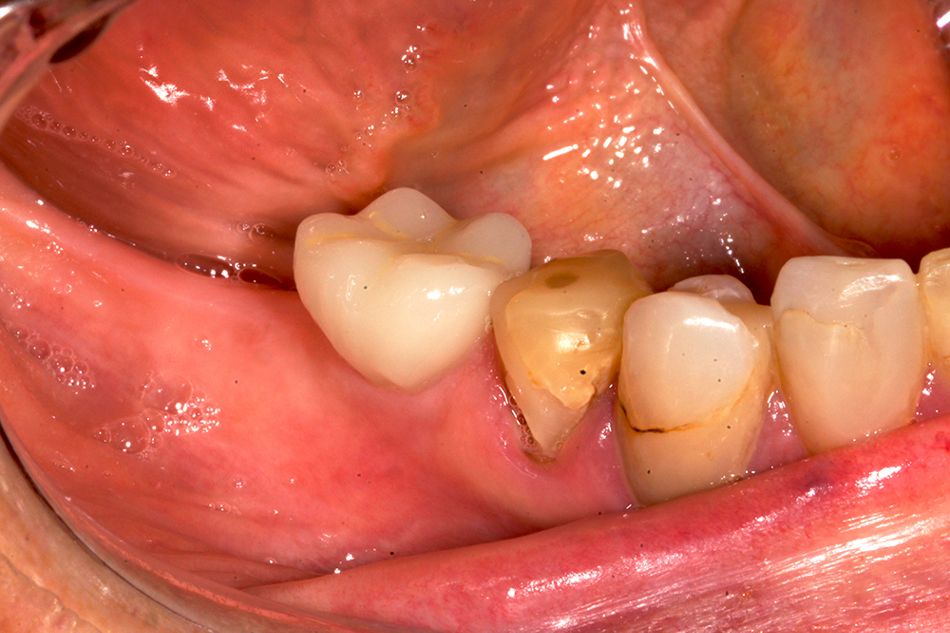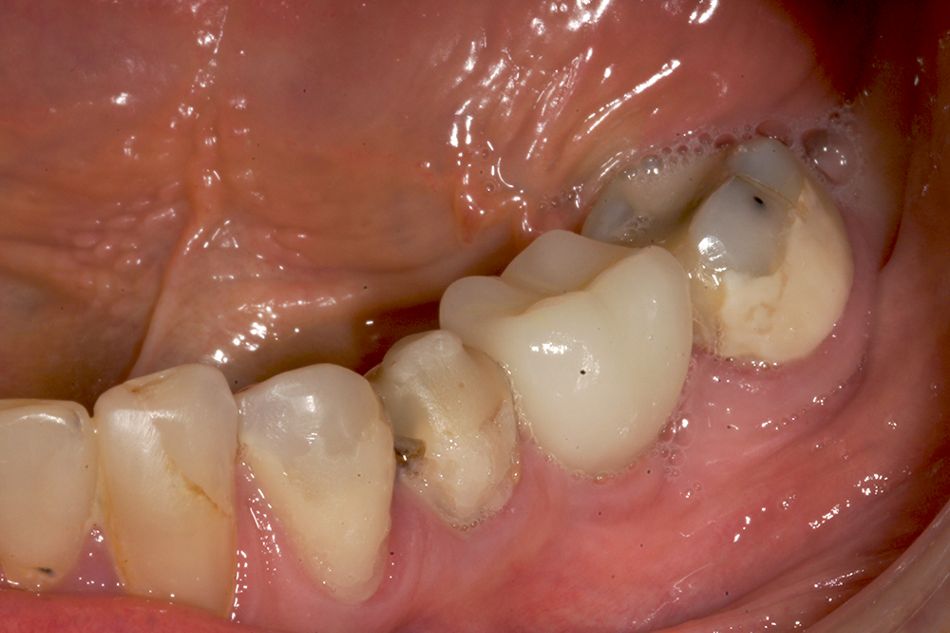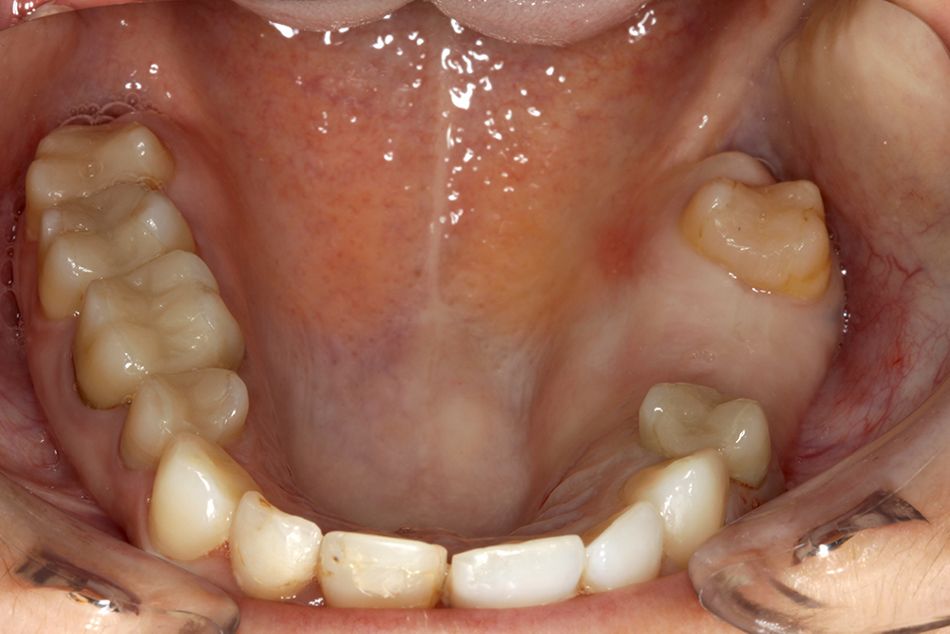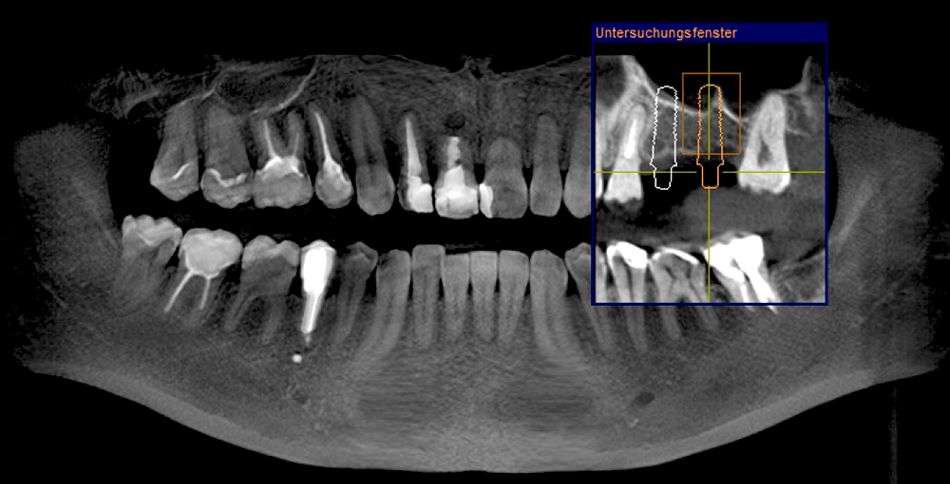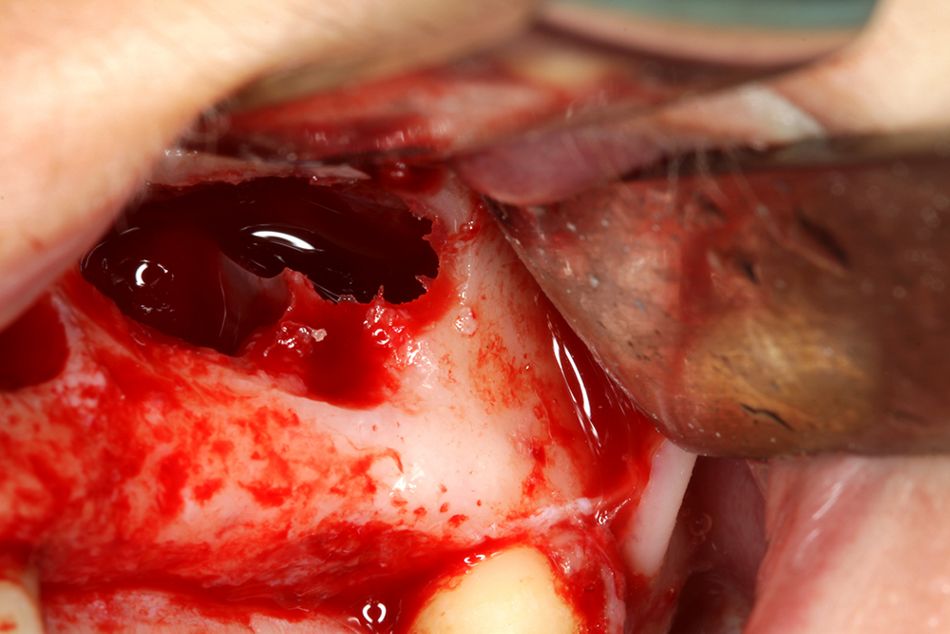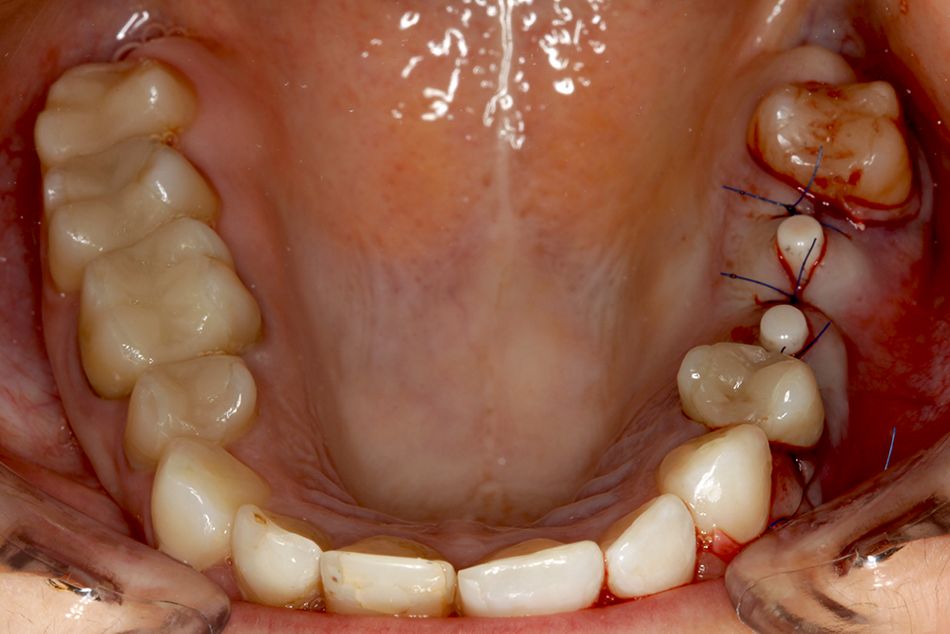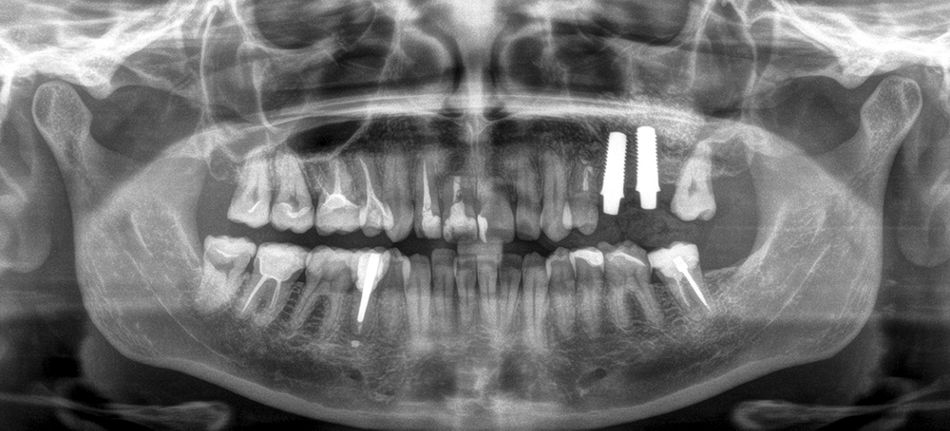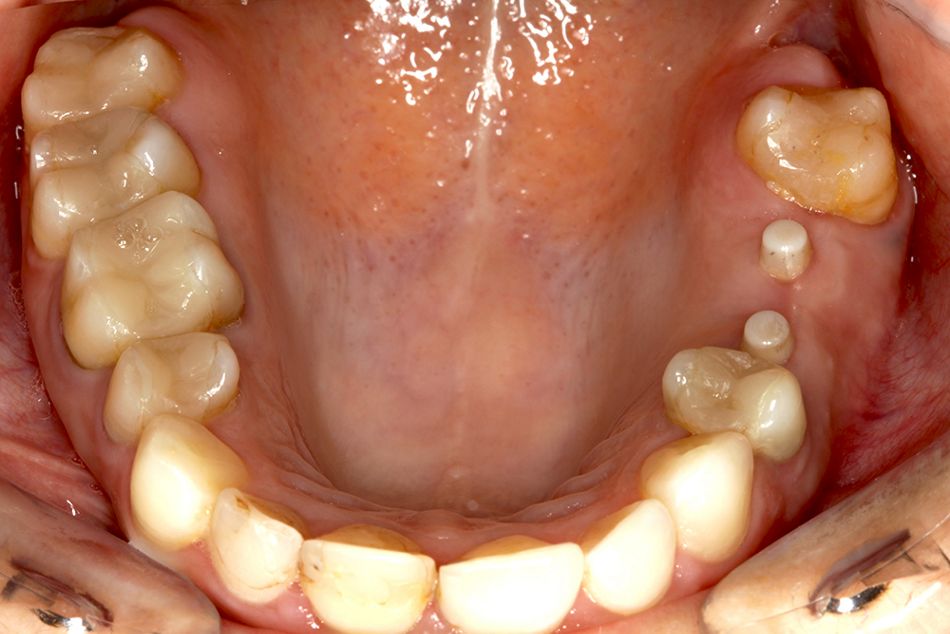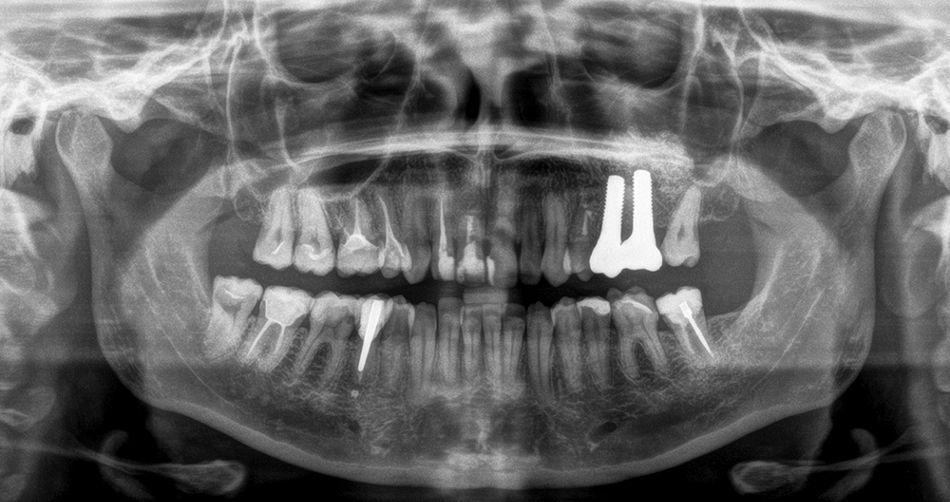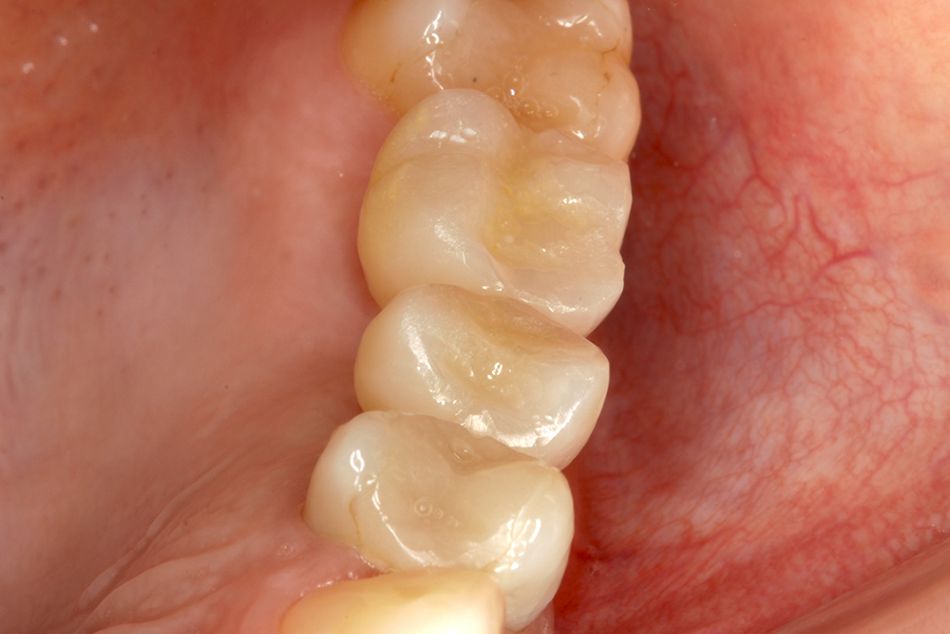As part of a new study concept, 40 one-piece ceramic implants (Straumann® PURE Ceramic Implant, CIM) were placed in 33 patients and followed up over a period of two years5. The patients in this group were not specifically preselected and were referred by various general dentists. The patients were pretreated and prosthetically managed by the referring colleagues. A ceramic implant was selected either in response to the patient's request for a metal-free restoration or for esthetic reasons. After the patients gave their informed consent, their cases were documented by case report forms, x-rays and photographs. Four implants were placed in the anterior teeth and 36 in the premolar and molar areas. In addition to cases with an adequate bone stock, some implants were inserted in a compromised bone situation: in the maxillary molar area with a simultaneous or two-stage external sinus lift where the vertical bone stock was inadequate. Simultaneous lateral augmentations in the anterior teeth area were also performed using the guided bone regeneration (GBR) technique. After a corresponding healing period, the implant shoulder was exposed, and the referring prosthetist assumed responsibility for the prosthetic provision. The patients were then asked to return for further check-ups. After a one-year observation period, the survival and success rates for 25 patients (30 implants) who attended their follow-up appointments were 100 percent. No implant loss occurred during this period, and all implants could be fitted with prosthetic restorations.
First published in Implantologie Journal 7/8 2017.
CASE REPORT 1
Initial situation
The 47-year-old woman was referred for a consultation. The patient had no pre-existing illnesses and she was a non-smoker. There was no evidence of parafunctional habits. On the panoramic x-ray, teeth 36, 46 and 47 showed apical foci. The patient complained of occasional pain. She was briefed comprehensively about the possible treatments, including the option of implants. She specifically requested a completely metal-free restoration. Teeth 36, 46 and 47 were not worth preserving and were subsequently removed without complications.
Treatment planning
The subsequent implant planning took place two months after the removal of these teeth. Digital volume tomography (DVT) visualized the ideal implant position in three dimensions. Since the patient had meanwhile finally decided on a ceramic implant, the exact positioning of the implants was extremely important. For reasons of cost, the patient decided not to have an implant in area 47. Four months after teeth removal, ceramic implants were placed in areas 36 and 46 under local anesthesia.


